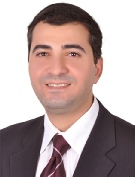
Conference information
Papers
Sponsored By



Abstract:
Prof. Mohammad S. Sharawi is currently a Professor of Electrical Engineering at King
Fahd University of Petroleum and Minerals (KFUPM), Dhahran, Saudi Arabia. He was
a visiting Associate Professor at the Intelligent Radio (iRadio) Laboratory, at the
Electrical Engineering Department, University of Calgary, Alberta, Canada, during
the Summer-
Prof. Sharawi is the founder and founder and director of the Antennas and Microwave
Structure Design ( AMSD ) laboratory at KFUPM. His research interests include Printed
Antennas and Antenna Arrays, MIMO Antenna Systems, Millimeter-

Biography:
The continuous demand for high data rates and connectivity has evolved wireless standards from their 1st (1G) generation to the 4th one (4G) as we speak. Nowadays, you can browse the internet, watch a movie or play an online game with high resolution and good speed. A large leap in the amount of supported data rates and connection speeds has been felt by the users when the 4G standard was deployed worldwide comparing it to its predecessor. Such high speeds are a consequence of
several enabling technologies that were adopted such as modulation, multiplexing
and coding techniques as well as the use of multiple-
Prof. Mohammad S. Sharawi
-
fading buy utilizing it to provide multiple independent channels that can be used for parallel data transmissions, and thus enhancing the data rates (or channel capacity). This was a major milestone in the wireless technology.
In this talk, we will examine the aspects of designing MIMO antenna systems for wireless handheld terminals, evaluating their performance and discussing the challenges encountered when integrating multiple antennas in close proximity. Several practical examples and recent advancements of such antenna system designs will be discussed. The prospects of using MIMO in the upcoming 5G standards and integrating it with the new enabling technologies that will be targeting 1000 times increase in the system capacity by 2020 when comparing it with 4G will be presented.
| Prof. Yehia Antar |
| Prof. Atif Shamim |
| Prof. Nemai Chandra Karmakar |
| Prof. Mohammad S. Sharawi |
| Prof. Dr. Ezzeldin A. Soliman |
| Dr. Mohamad Essaaidi |
| Prof. Sedki M Riad |
| A. Prof. Dr.-Ing. Mohamed El-Hadidy |